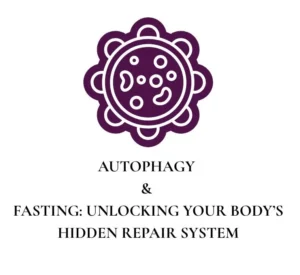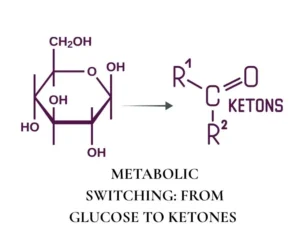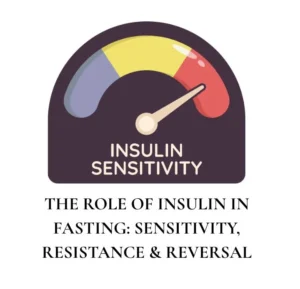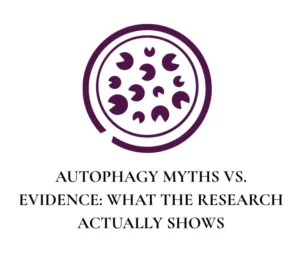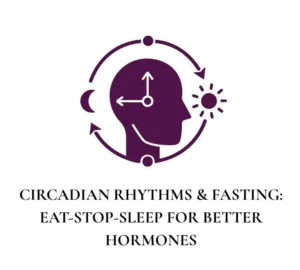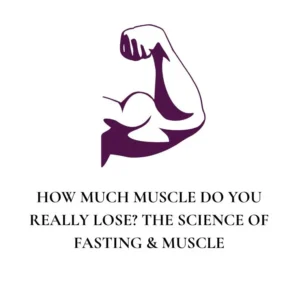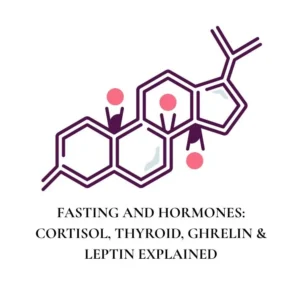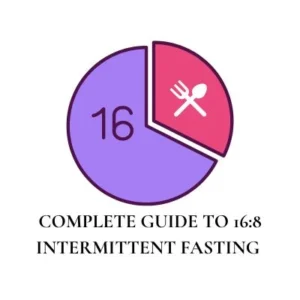People often ask: “How long do I need to fast to actually heal?” The most clinically and biologically interesting window is the 0–72-hour period.
In these three days your body moves through clear metabolic phases: it exhausts immediate fuel, switches to fat burning, ramps up repair mechanisms (autophagy), refreshes immune cells, and recalibrates hormones and inflammation.
Table of Contents
ToggleThis post walks you hour-by-hour through that timeline, translating the biology (insulin, mTOR, AMPK, ketones, autophagy, mitophagy) into plain language and practical guidance.
I’ll explain what you may feel, what’s happening in your cells, and how to maximize benefits while staying safe.
Quick note: this is educational content, not individualized medical advice.
If you have diabetes, are pregnant, nursing, on medications, underweight, or have serious health issues, consult a clinician before attempting extended fasting.
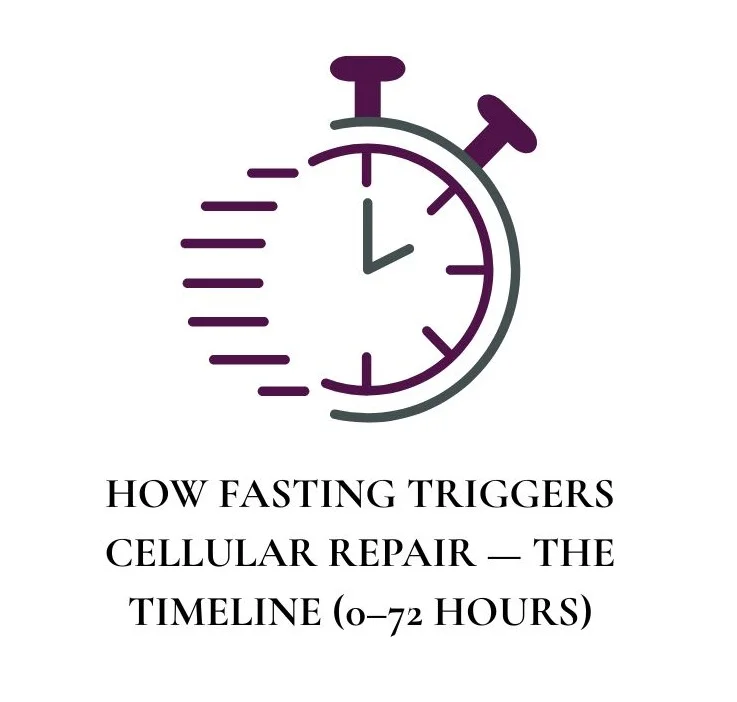
People often ask: “How long do I need to fast to actually heal?” The most clinically and biologically interesting window is the 0–72-hour period.
In these three days your body moves through clear metabolic phases: it exhausts immediate fuel, switches to fat burning, ramps up repair mechanisms (autophagy), refreshes immune cells, and recalibrates hormones and inflammation.
This post walks you hour-by-hour through that timeline, translating the biology (insulin, mTOR, AMPK, ketones, autophagy, mitophagy) into plain language and practical guidance.
I’ll explain what you may feel, what’s happening in your cells, and how to maximize benefits while staying safe.
Quick note: this is educational content, not individualized medical advice.
If you have diabetes, are pregnant, nursing, on medications, underweight, or have serious health issues, consult a clinician before attempting extended fasting.
The key players
Before the timeline, here are a few terms you’ll see repeatedly — short, plain definitions so nothing is mysterious.
- Insulin: hormone that helps move sugar (glucose) from the blood into cells (low insulin signals energy scarcity).
- Glycogen: stored glucose in the liver and muscles (your short-term fuel tank).
- Ketones: molecules (like beta-hydroxybutyrate) produced when the body burns fat for energy.
- Ketosis: metabolic state where ketones are a primary fuel.
- mTOR (mechanistic target of rapamycin): a cellular “growth” sensor that promotes building and suppresses repair when active.
- AMPK: an energy sensor that turns on repair and recycling when the cell is low on fuel.
- Autophagy: cellular recycling (cells break down damaged parts to reuse components).
- Mitophagy: targeted autophagy of damaged mitochondria (the cell’s powerhouses).
- BDNF (Brain-Derived Neurotrophic Factor): protein that supports brain cell health and plasticity (often rises during fasting).
TIMELINE OVERVIEW (0–72 HOURS) — WHAT TO EXPECT
Below is a practical, evidence-informed timeline. Individual variation is normal — age, sex, prior diet, physical activity, and metabolic health change timing.
Use this as a map, not a rigid rule.
0–6 HOURS — THE FED STATE, FINISHING DIGESTION
What’s happening
You’ve just eaten. Your body is digesting and absorbing nutrients.
Blood glucose rises, insulin is active (telling cells to uptake sugar), and glycogen stores in the liver begin to refill.
Cellular focus: growth and storage. mTOR is more active; autophagy is suppressed because the body prioritizes building and using incoming nutrients.
What you may feel: satisfied, steady energy (unless you ate high-carb/simple-sugars, which may cause an early crash).
Practical tip: Choose balanced meals (protein + fiber + healthy fats) to extend the time before hunger returns and to slow insulin spikes.
6–12 HOURS — TRANSITION: GLYCOGEN STILL SUPPLYING ENERGY
What’s happening
The early post-absorptive phase.
The liver glycogen (stored sugar) is the primary fuel keeping blood glucose stable.
Insulin levels gradually fall. The body is still mostly in the “fed” metabolic mode.
Cellular focus: still growth-focused, but insulin is cooling down. AMPK begins to sense slight energy shortage in some cells.
What you may feel: mild hunger in the later hours; some people use black coffee or tea to blunt hunger.
Practical tip: Drinking water and black coffee (no sugar/milk) is fine and may support the later shift into repair mode.
12–16 HOURS — METABOLIC SWITCH STARTS (fat mobilization & early autophagy)
What’s happening
Liver glycogen becomes depleted (for many people around 12–16 hours), so the body begins to switch fuels to fatty acids and ketones.
Insulin is low. AMPK activity rises, mTOR activity decreases — the molecular environment that allows autophagy to begin is forming.
Cellular focus: the first waves of autophagy (low level) start in tissues that are most sensitive to nutrient changes. Cells begin clearing damaged proteins and small organelles.
What you may feel: hunger may fade; some people report mild alertness or mental clarity. Others feel fatigue or mild headaches (often due to hydration/electrolyte changes).
Practical tip: If you’re new to fasting, aim for this window daily (16:8) to get consistent low-level repair without extended stress.
16–24 HOURS — DEEPENING KETOSIS AND ACTIVE AUTOPHAGY
What’s happening
By 16–24 hours most people are in light-to-moderate ketosis (blood ketones rise).
Autophagy accelerates — cells more actively dismantle dysfunctional proteins and organelles.
Growth signals (mTOR) remain suppressed, letting repair proceed.
Special phenomena: The Migrating Motor Complex (MMC) — the gut’s self-cleaning wave — is more active, helping clear bacteria and debris from the small intestine (this can help digestion and may reduce SIBO risk).
Cellular focus: more robust autophagy across liver, muscle, and some neural tissue. Damaged mitochondria are marked for mitophagy.
What you may feel: many reports clearer thinking, reduced hunger, mild euphoria or calm. Others may feel low energy or shakiness if blood sugar regulation is poor.
Practical tip: Keep electrolytes balanced (sodium, potassium, magnesium) especially if you feel lightheaded. A pinch of salt in water or an electrolyte drink without sugars helps.
24–36 HOURS — IMMUNE SIGNALING SHIFTS AND STEM CELL ACTIVATION BEGINS
What’s happening
You’ve crossed the 24-hour mark. Ketones are higher; fatty acids are a major fuel.
Autophagy continues and becomes more pronounced.
Emerging research shows that extended fasting (24+ hours) can trigger immune system remodeling — old immune cells are cleared and stem-cell-driven regeneration is signaled (this is most pronounced beyond 48 hours in many studies).
Cellular focus: deeper mitophagy (selective mitochondrial repair) and recycling of worn cellular machinery. In the liver and gut, cellular cleanup supports metabolic resetting.
What you may feel: muted hunger, increased ease with fasting for many experienced fasters. Emotional waves (feelings, introspection) are common as the body shifts.
Practical tip: Rest when necessary; moderate movement (walking, gentle yoga) supports circulation and mental wellbeing. Avoid heavy strength workouts; the body prioritizes repair.
36–48 HOURS — PEAK AUTOPHAGY FOR MANY TISSUES; HORMONAL RE-CALIBRATION
What’s happening
Autophagy ramps up in many tissues; insulin is very low.
Growth hormone (HGH) may increase (protecting muscle and aiding fat loss).
Cellular repair processes are high; inflammation markers often drop.
Cellular focus: near-peak recycling activity in cellular compartments that benefit most from repair (liver, immune cells, neural tissue). Processes supporting longevity and resilience are active.
What you may feel: advanced mental clarity, steady energy, sometimes deeper emotional calm or spiritual feelings. Some report insomnia or unusual dreams as the body’s circadian signals shift — this often passes.
Practical tip: Hydrate steadily, maintain electrolytes, and prepare refeed plan (gentle, nutrient-dense foods). Breaking a 48-hour fast with heavy meals risks digestive distress.
48–72 HOURS — IMMUNE SYSTEM RESET AND STEM CELL-DRIVEN REGENERATION (clinical window)
What’s happening
This window (48–72 hours) is where several clinical studies show robust immune system effects: old white blood cells (immune cells) have been broken down and signals for stem cells to produce fresh immune cells are elevated. Autophagy and mitophagy remain high.
The metabolic state is deeply ketotic.
Cellular focus: major cleanup, immune refresh, mitochondrial renewal. Cellular energy sensors (AMPK) are active, supporting longevity pathways. BDNF and other neuroprotective factors may be increased, supporting brain resilience.
What you may feel: many fasters report a profound sense of calm, clarity, reduction in chronic pain/inflammation. Appetite often resets — people find their relationship to food changes after this depth of fast.
Practical tip: Extended fasts beyond 48 hours should be done with planning. If this is your first extended fast, seek medical guidance. Prepare refeed meals (bone broth, steamed vegetables, easy proteins) to transition gently.
HOW TO TELL IF AUTOPHAGY AND REPAIR ARE HAPPENING (signs & sensations)
You cannot directly feel autophagy (it’s microscopic), but you may notice indirect signals:
- Decreased hunger or change in appetite patterns.
- Mental clarity and focus (often around 24–48 hours).
- Reduced chronic pain or inflammation over repeated fasts.
- Improved sleep quality after the fast (though sleep can be disturbed during the fast).
- Emotional shifts: calm, introspection, mild mood swings are common.
Remember: absence of strong sensations doesn’t mean nothing is happening. Many powerful repairs are silent.
PRACTICAL PROTOCOL: HOW TO STRUCTURE A SAFE 0–72 HOUR FAST
- Prepare (48–72 hours before): lighten carbohydrate load (helps you enter ketosis faster) and hydrate well. Avoid bingeing.
- Day 0 (start): stop eating after a balanced dinner. Aim for meals with protein, fiber, and healthy fats.
- 0–24 hours: hydrate, black coffee or green tea allowed, gentle movement.
- 24–48 hours: continue hydration, add electrolyte maintenance, rest if needed; avoid heavy exercise.
- 48–72 hours: consider medical supervision if it’s your first extended fast; monitor symptoms; slow, mindful refeed planning.
- Breaking the fast: start with bone broth or fermented vegetables, then progress to lean proteins and steamed vegetables. Reintroduce fats and carbs gradually.
SAFETY, WHO SHOULD NOT FAST, AND WHEN TO SEEK HELP
Do not attempt extended fasting without guidance if you are: pregnant, breastfeeding, underweight, trying to conceive, on insulin or sulfonylurea medications (diabetes drugs that lower blood sugar), have adrenal insufficiency, or have an active eating disorder history.
If you have chronic disease (heart, kidney, liver), consult a physician.
Stop fasting and seek medical help if you experience severe dizziness, fainting, fainting-like episodes, chest pain, confusion, or persistent vomiting.
SUPPLEMENTS, ELECTROLYTES, AND SUPPORTING PRACTICES
- Electrolytes: sodium, potassium, magnesium — help prevent dizziness, muscle cramps, and headaches. Use electrolyte mixes without sugar.
- Minerals and Vitamin D: maintain baseline status before extended fasts.
- Gentle caffeine: black coffee or green tea can aid alertness and may support autophagy (avoid sugar or cream).
- Movement: walking, yoga, mobility work are supportive. Strength training is better scheduled after refeeding for most people.
AFTER THE FAST: HOW TO REFEED FOR LASTING BENEFITS
The post-fast meals determine whether the repair translates into sustained health. Refeed slowly:
- Hour 0–3 after breaking: bone broth, diluted fermented foods, small portions of steamed veggies.
- Day 1–2: include lean proteins (fish, eggs), healthy fats (olive oil, avocado), and low-fermentable carbs.
- Days 3–7: reintroduce regular meals, prioritize fiber, probiotics, and balanced macronutrients.
Avoid a single heavy, fatty, fried meal right after an extended fast — digestion can be overwhelmed.
CLINICAL IMPLICATIONS & WHY GUIDED FASTING MATTERS
Research (and clinical experience) shows the 48–72-hour window is a biological sweet spot for immune remodeling and deep cellular cleanup.
But the window is powerful — and power requires respect. Guided fasting in a clinical setting or with experienced supervision helps:
- Tailor protocols to your health status.
- Monitor vital signs and labs if needed (electrolytes, glucose).
- Plan safe refeeding to protect digestive health.
- Optimize outcomes (e.g., combining short fasts with lifestyle changes for lasting benefits).
If you’re curious about using fasting therapeutically (for metabolic disease, autoimmune conditions, or to reset chronic inflammation), personalized guidance shortens the learning curve and reduces risk.
Frequently Asked Questions
Q: When does autophagy start during a fast?
A: Early autophagy signals begin around 12–16 hours; deeper, clinically meaningful autophagy steadily increases after 24 hours and can peak between 48–72 hours. (Individual variation applies.)
Q: Does coffee break autophagy?
A: Plain black coffee or green tea generally does not block autophagy and may enhance it; adding sugar or cream will interrupt the fasting signal.
Q: How often can I safely do a 48–72 hour fast?
A: For many healthy adults, once every 1–3 months is common; frequency should be individualized based on health goals and tolerance.
Q: Will I lose muscle during a 72-hour fast?
A: Minimal muscle loss occurs if you’re not severely calorie-restricted chronically; growth hormone and ketones help spare muscle during short-term extended fasts.
The 0–72 hour fasting window is a remarkable, natural tool your body already knows how to use.
It’s an invitation to pause the constant feed of modern life and let your cells do the work they’ve kept waiting for.
If reading this makes you curious — but you’re unsure where to start or whether it’s safe for your body — that’s normal.
Many people benefit from personalized planning: the right protocol, hydration strategy, and refeed plan can turn tentative curiosity into lasting healing.
If you’d like guidance tailored to your health, medical history, and goals, we offer consultations and supervised programs that combine science, safety, and compassion.
You don’t have to fast alone — and guided support dramatically improves outcomes.

